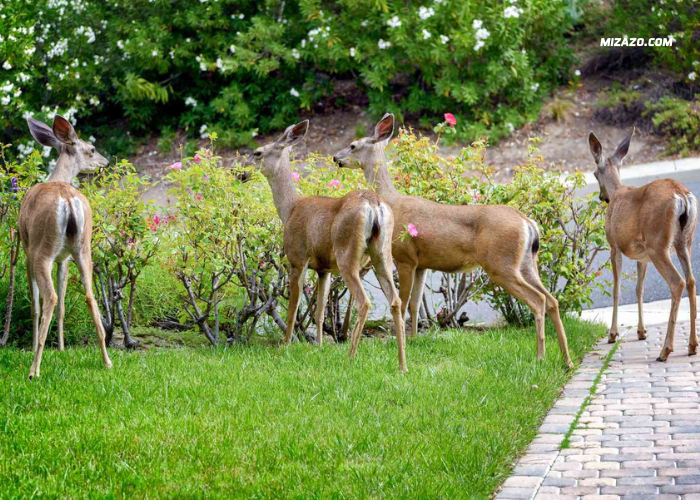Cosmos flowers (Cosmos spp.) have long been admired for their delicate beauty and vibrant colors, making them a popular choice for gardeners and flower enthusiasts. These daisy-like blooms are known for their ability to thrive in various conditions, making them a versatile addition to landscapes. However, as many gardeners have come to learn, there’s a potential challenge that arises when cultivating cosmos flowers: the presence of deer. These graceful creatures, while captivating in their own right, can pose a threat to the flourishing cosmos blooms. In this article, we delve into the intriguing question: Do deer eat the cosmos? We explore the dietary preferences of deer, their interactions with cosmos flowers, and strategies to protect these cherished blossoms from deer.
The Appeal of Cosmos Flowers
Before delving into the matter of deer and their relationship with cosmos flowers, let’s take a moment to appreciate the allure of these blossoms. Cosmos flowers are native to regions of North and South America, and they have made their way into gardens worldwide due to their captivating appearance.
The plants feature feathery leaves and come in a variety of colors, including shades of pink, white, orange, and deep red. Their ability to bloom abundantly and their endurance in various soil types and climate conditions make them a sought-after choice for both novice and experienced gardeners.
Dietary Preferences of Deer
To understand the impact of deer on cosmos flowers, we must first understand the dietary preferences of deer. Deer are herbivores, which means their diet primarily consists of plant matter.
Their feeding habits are influenced by factors such as the availability of food, the season, and the local environment. While deer have a wide-ranging diet that includes grasses, leaves, fruits, and even woody plants, their preferences can vary among species and regions.
Cosmos Flowers in the Deer Diet
So, do deer eat cosmos? The answer is not a straightforward yes or no. Deer do have the potential to consume cosmos flowers, especially in environments where their natural food sources are limited. Cosmos flowers, with their tender leaves and attractive blooms, can be tempting to hungry deer, particularly during periods of scarcity. However, cosmos flowers are not typically among the top choices for deer. Their preference for other vegetation, such as native plants, grasses, and certain shrubs, often outweighs their interest in cosmos flowers.
Strategies to Protect Cosmos Flowers from Deer
For gardeners who are passionate about nurturing cosmos flowers and wish to deter deer from munching on their floral treasures, several strategies can be employed:
5.1. Fencing:
Installing a sturdy fence around your garden or flower beds is one of the most effective ways to prevent deer from accessing cosmos flowers. A fence with a height of at least 8 feet is recommended to ensure that deer cannot jump over it. This approach, while effective, requires an investment of time and resources.
5.2. Repellents:
Various commercial deer repellents are available that emit scents or tastes that are offensive to deer. These repellents can be sprayed on or around cosmos flowers to discourage deer from feeding. However, the effectiveness of repellents can vary, and some may need to be reapplied after rain.
5.3. Plant Diversity:
Introducing a variety of plants to your garden can help minimize the impact of deer feeding on cosmos flowers. Deer are less likely to target specific plants if they have a variety of food sources available to them.
5.4. Natural Barriers:
Consider incorporating natural barriers like thorny bushes or plants with strong fragrances around your cosmos flowers. These can create obstacles that deter deer from reaching the flowers.
6. Coexistence and Conservation
While it’s natural for gardeners to want to protect their beloved cosmos flowers, it’s also important to remember that deer play a role in local ecosystems. They contribute to seed dispersal and can shape plant communities through their feeding habits. Striking a balance between nurturing our gardens and allowing for natural interactions is key to coexisting with wildlife.
Conclusion
In the enchanting world of gardening, the question of whether deer eat cosmos flowers highlights the delicate interplay between humans and wildlife. Cosmos flowers, with their alluring colors and sturdy disposition, may occasionally fall victim to the browsing tendencies of deer, particularly in times of scarcity.
However, with thoughtful strategies such as fencing, repellents, and plant diversity, gardeners can protect their cosmos blooms while still appreciating the beauty of these elegant herbivores. As we continue to cultivate our gardens, let’s remember the importance of maintaining harmony between our cultivated spaces and the natural world around us.

